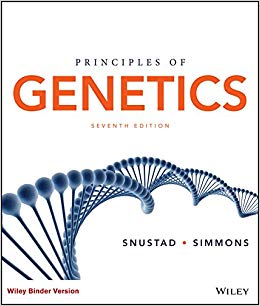Consider the following genetically controlled bio synthetic pathway for pigments in the flowers of a hypothetical plant:
Question:

Assume that gene A controls the conversion of a white pigment, P0, into another white pigment, P1; the dominant allele A specifies an enzyme necessary for this conversion, and the recessive allele a specifies a defective enzyme without biochemical function. Gene B controls the conversion of the white pigment, P1, into a pink pigment, P2; the dominant allele, B, produces the enzyme necessary for this conversion, and the recessive allele, b, produces a defective enzyme.
The dominant allele, C, of the third gene specifies an enzyme that converts the pink pigment, P2, into a red pigment, P3; its recessive allele, c, produces an altered enzyme that cannot carry out this conversion. The dominant allele, D, of a fourth gene produces a polypeptide that completely inhibits the function of enzyme C; that is, it blocks the reaction P2†’P3. Its recessive allele, d, produces a defective polypeptide that does not block this reaction. Assume that flower color is determined solely by these four genes and that they assort independently. In the F2 of a cross between plants of the genotype AA bb CC DD and plants of the genotype aa BB cc dd, what proportion of the plants will have
(a) red flowers?
(b) pink flowers?
(c) white flowers?
Step by Step Answer:

Principles of Genetics
ISBN: 978-1119142287
7th edition
Authors: D. Peter Snustad, Michael J. Simmons





